Great article, I can't think of a single car to add to that list.


For grassroots racers, there’s a sense of pride that comes with throwing open the garage door on a weekday evening, letting the shop lights and stereo sounds bleed out into the suburban dark, and continuing the process of transforming a regular car into something more than it was intended to be– something more powerful, agile, lightweight and alive.
But even staunch do-it-yourselfers will perk up when the factory makes a competition-ready version of their favorite street car. After all, manufacturers have undeniably impressive resources: cutting-edge technology, teams of top engineers, specialized testing facilities, and seemingly bottomless parts bins and budgets.
Some of these factory-built specials lurk in the shadows, only available to those who know the secret handshake. Others are touted about on the international scene or dealership lots. The stories behind each of these machines could fill a book, but when you get down to it, they all exist for the same simple reason: Because race car.
How did a car earn a spot on our list of 14 favorites? By changing our corner of the motorsports world. Each one is a milestone that made a major impact on our scene.

When the Porsche 911 switched to water cooling as the ’90s came to a close, the company’s long trend for supplying race variants didn’t screech to a halt. Porsche engineers simply had a new foundation for speed. The road-going GT3 homologated the parts needed for the GT3 Cup racer.
The GT3’s engine, the M96/76, came from Porsche’s Le Mans-winning GT1–although in the GT3 it was used without the turbos. Compared to the standard 911 Carrera, the GT3 also sat lower, featured an adjustable suspension, and received the upsized 911 Turbo brakes. The fixed rear wing, side skirts and front spoiler visually set the GT3 apart from the rest of the 911 lineup.
The track-only GT3 Cup infused that formula with even more sportiness, like center-lock wheels, an extraaggressive suspension setup, lighter body panels and a gutted interior featuring a factory-installed roll cage. The goal here was FIA GT3 racing as well as other professional series.
Not radical enough? Porsche also offered wider, lighter and even meaner GT3 Cup variants sporting the R, RS and RSR suffixes. These models were aimed specifically at Le Mans and other top-level venues.
Legacy:: The original GT3 Cup and its ilk carried Porsche’s torch into the new millennium. Manthey Racing took the GT-class win at Le Mans in 1999 with a then-new GT3R, and the wins quickly spread to the U.S.: The GT3 Cup also saw success at places like Daytona and Sebring. In fact, in 2003 The Racer’s Group took the overall win at Daytona in a GT3RS. The GT3 Cup continues to be a regular contender in SCCA Club Racing ranks, winning five GT2-class titles to date. That original GT3 Cup was eventually superseded by updated versions based on the 997- and 991-chassis cars, but that doesn’t mean it was put out to pasture. It just moved to the club racing ranks. Go to any Porsche club event–or really any track event–today, and you’ll see lots of GT3 Cups about. Thanks to generous production figures, prices for 996-chassis GT3 Cups are fair considering the performance offered, with many changing hands in the $60,000-$75,000 price range.

Out of all the Ferrari race cars, the 250 GTO stands atop the podium. Its lines are simply beautiful, that V12 emits a musical note, and the original driver roster includes many of the day’s greats, like Sir Stirling Moss and Phil Hill.
Ferrari only built 39 examples during that 1962-’64 model run, but they’re not all hidden away today. Go to a top-tier vintage race or concours like Monterey, Goodwood or Amelia Island, and you’ll likely see one.
Legacy: The 250 GTO was a winner, picking up FIA GT manufacturer championships for 1962, 1963 and 1964. To buy one today, figure you’ll need $40 to $50 million. Save up, folks.
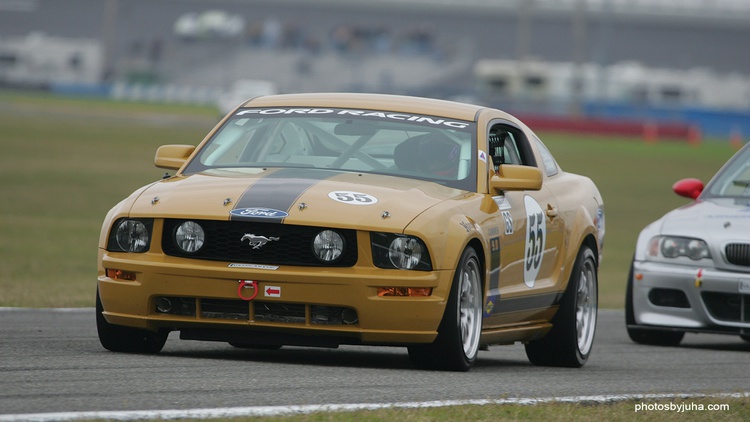
An all-new Mustang debuted for the 2005 model year, and with it Ford unveiled something special just days before the Grand-Am Koni Challenge season kickoff: the Mustang FR500C, a full race version of their favorite pony car.
Legacy: That Mustang wasn’t known for its slippery shape, but the 5.0 Cammer engine provided enough power to make it a winner–and earn Ford that year’s team, driver and manufacturer championships. Since then, Ford Racing has continued to deliver race-ready Mustangs, including the Mustang FR500S, Boss 302R and Boss 302S.

The latest Dodge Viper ACR is billed as being street-legal, yet it comes with enough aero to generate more than 1700 pounds of downforce. Many of those aero elements, by the way, are adjustable so they can be tailored to track conditions and driver preferences.
Want more track hardware? How about a fully adjustable suspension, 645 horsepower, giant Brembo brakes and sticky Kumhos? Viper Exchange will sell you a new one starting at about $118,000.
Legacy: The ACR package isn’t new to the Viper. The first one debuted back in 1999, adding an adjustable suspension and stripping out some weight. Over the years, though, the ACR formula has gotten more and more radical, gaining power and additional aero aids. Dodge has offered track-only variants, too, like the 2010 Viper ACR-X and Competition Coupe.

The Neon ACR harked back to a golden era, when Chrysler knew how to take a bare-bones economy car, turn up the wick a few notches, and give the performance set something to chew on. Okay, maybe it wasn’t the second coming of the mid-’60s factory lightweights, but it followed a familiar formula: more performance packed into a no-frills chassis.
The Neon appeared for the 1994 model year and was sold through both Dodge and Plymouth dealers, curiously enough with the same model name. This was seen as a big step up from the old K-car platform.
In addition to a full-court marketing campaign, the Neon arrived with another boost to its appeal: the ACR competition package. Buyers could add it to the single-cam sedan or the twin-cam coupe. It didn’t increase horsepower–it wasn’t quite a Hemi replacement–but it did feature several performance enhancements, including a tighter final drive, stronger hubs, a quicker steering ratio and thicker anti-roll bars.
The original Neon ACR received upgraded Arvin dampers; after 1996, Konis became standard. All ACRs received aluminum wheels, and the package could only be ordered with a five-speed manual box. Although ACRs hid most of their modifications under their skin and lacked any special badges, one feature made them easy to recognize: fog light openings in the front bumper that contained no fog lights.
Better equipment wasn’t the ACR’s only perk. It also came with lots of support–and contingency dollars–from Chrysler. At the time, a successful Neon club racer or autocrosser could actually turn the sport into a financially productive venture.
Legacy: The Neon ACR didn’t win the big SCCA championships in its debut year, but the winning streak started soon after. In SCCA D Stock Solo competition, Brian Priebe, Mark Chiles, Mark Daddio and Dan Shields gave the ACR gold medals from 1995 through 2000. In D Stock Ladies, that run lasted through 2001 thanks to Lynne Rothney-Kozlak, Laura Molleke, Lynn Collins and Ann Heller. The ACR took to road racing, too: The single-cam sedan dominated Showroom Stock C from 1995 through 1997 with big wins by Erich Heuschele, Paul Bonaccorsi and Neal Sapp. Plus the Neon starred in its own professional spec series.
The second-generation Neon showed up for the 1999 model year, and for the first few years it also could be ordered in ACR guise. By then, however, increased weight and aging architecture left the car at the back of the pack, unable to generate the following it once had. Like most any other Neon, a first-generation ACR can be yours today for little to no money. Here is your bargain buy among factory-built race cars. We miss ours.
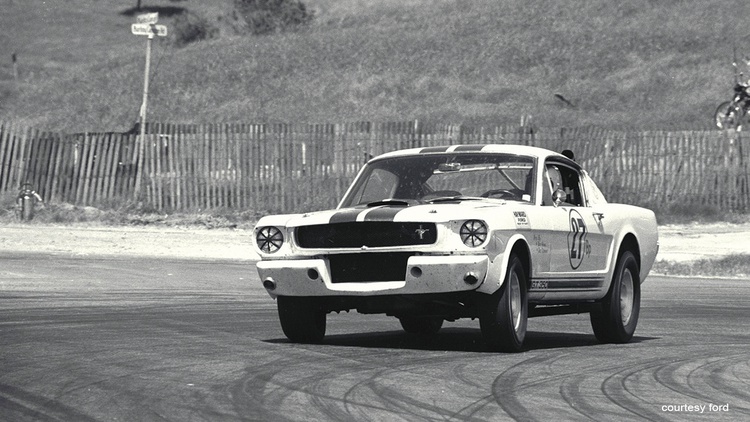
Soon after Ford turned the world upside-down with its sporty car for the masses, the Mustang, company boss Lee Iacocca came to his old friend Carroll Shelby with a favor: Could you give the Mustang some street cred by turning it into a race car?
Okay, maybe Iacocca didn’t use those exact words, but the sentiment was there. Remember, that era’s performance pool was a deepening one, swimming with Tri-Power Pontiac GTOs and Hemi Belvederes.
Shelby decided to take the Mustang SCCA road racing and responded with his GT350. He removed the back seat, technically turning the Mustang into a sports car and making it legal for B Production competition.
Well, almost legal. First the GT350 had to meet the SCCA’s definition of a production car: a model with a run of at least 100 street-legal examples.
The design also received several more tweaks before it was final. Along with deleting the rear seat, Shelby’s crew added traction bars, lowered the front suspension, installed Koni dampers, and fit 15-inch wheels. Power came from a tweaked version of the Mustang’s 289 and was backed by a four-speed box and 9-inch rear axle. Peter Brock handled the design of the body and interior modifications; the dashboard tachometer pod, fiberglass hood and functional hood scoop are all his handiwork.
Shelby American began production and quickly met the SCCA homologation requirements. By the end of that 1965 model year, 521 street production copies of the GT350 had rolled out of the factory.
Some 35 competition variants were built as well, their engines balanced and blueprinted, their carburetors upsized, their fenders tweaked, their interiors bare. Shelby left off the front and rear bumpers, instead adding those distinctive fiberglass front aprons. The side glass was gone, too, and the rear-quarter windows were simply blanked off.
The GT350R was born. At the time, though, it was simply called “the competition model.” According to the Shelby American Automobile Club, the famed GT350R name didn’t come about until the early 1970s.
Legacy: As Iacocca and Shelby hoped, the competition version of the GT350 quickly became an SCCA champion. Jerry Titus drove one to the SCCA B Production national title in 1965, and Walt Hane repeated that feat the following year. Fred Van Buren made it a hat trick in 1967. While other Shelby-badged Mustangs followed, the factory never offered a true GT350R follow-up. By the late ’60s, Corvettes had taken over the B Production ranks. Today, the GT350 is a staple at nearly any vintage racing event. A totally perfect 1965 example can trade for nearly half a million dollars; double that value for one of the three dozen race versions.

Shelby American churned out 998 genuine Cobras in all, and each one was purposely built for the race track. Right? Not exactly.
Although Carroll Shelby dreamed of building his own Ferrari-beater, the truth is that most Cobras were sold for street use. And since the Cobra cost more than the Corvette, the bigger truth is that he had a tough time selling them all.
According to the Shelby American Automobile Club, the number of dedicated competition Cobras built is rather humbling: about 60, and that includes the famed half-dozen Daytona Coupes plus a few prototypes and drag cars. Of course, many Cobras originally sold for street use did find their way to the track.
Legacy: Despite meager production numbers, the Cobra was an on-track success, owning the SCCA A Production national titles from 1963 through 1968. After Peter Brock penned the updated Coupe bodywork, the Cobra dominated the 1964 and 1965 seasons with big wins at Sebring, Le Mans, Daytona, the Nürburgring and even Bonneville. Today, a genuine Cobra of any ilk is easily a million-dollar purchase.
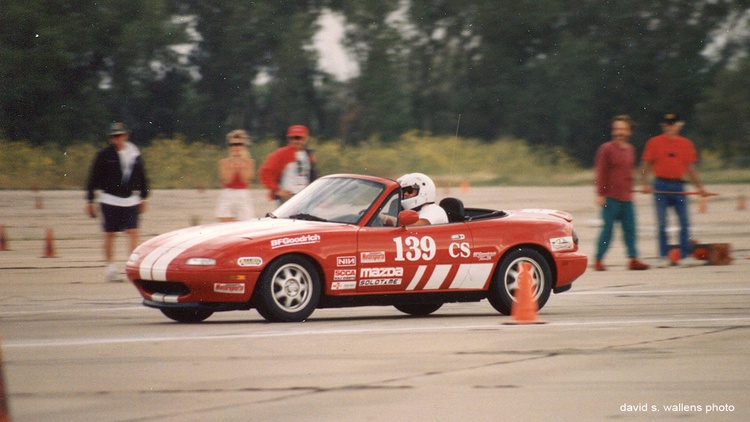
At its core, the 1994 Mazda Miata R wasn’t that radical. Call it a carefully orchestrated option package. Mazda engineers swapped in the stiffer suspension previously found on the 1993 Limited Edition model, then added the optional Torsen differential and 14x6-inch alloy wheels. Unnecessary items got the ax, like power windows and assisted steering.
Legacy: While perhaps simple in makeup, the package was potent enough to kick off the Miata’s 1997-2003 reign over SCCA Showroom Stock B road racing. In autocross circles, that Miata R has been a national Stock-class contender, with titles dating back to 1994. We ran the car at right. Mazda followed up with the Sport package for the later NB-chassis Miata, and today its competition department will sell you a ready-torace MX-5 Cup car. Despite its place in motorsports, an early Miata R is still easily a sub-$10,000 purchase.

Sit back and quietly remember the sport compact scene of the 1990s: Import drag racing, engine-swapped Hondas and buzzy exhausts dominated the landscape. “The Fast and the Furious” was just a glimmer in the studio’s eye.
And in 1997, with “Macarena” still wafting heavily on the airwaves, Acura dropped the bomb to end all boy-racer bombs: the Integra Type R. Suddenly Honda’s grown-up division was supplying the ultimate sport compact.
Acura didn’t explicitly bill it as a raceready special, but the press materials didn’t leave much doubt: “Not surprisingly, a heavy emphasis was placed on the Type R’s performance on the racetrack during development, all in an effort to deliver an exciting car with exceptional acceleration, braking and handling capabilities.”
Features included hand-polished cylinder head ports, reinforced body stampings, bigger brakes, a limitedslip differential, and aero enhancements that actually did something. Oh, and the various weight-saving measures were the real deal: Acura didn’t apply any melt sheets to the floor, and air conditioning didn’t come standard.
Yeah, this was a race car.
Legacy: The Type R saw success just about everywhere it entered. In professional road racing, it claimed the World Challenge’s Touring Car title every year from 1997 through 2002. In autocross, it dominated Stock-class competition up until 2010, collecting some 16 national titles.
The Type R remained part of the Integra lineup through 2001, the end of the model run, and 3823 examples came stateside. Thanks to a potent package and potent demand, prices never really dipped. The car sold for about $24,000 when new, and rarely did nice examples sell for less than $15,000. Sadly, Acura didn’t apply that same magic to the RSX, the Integra’s follow-up.

As the ’80s thumped along to their Casio keyboard drumbeat, the Camaro IROC-Z ruled the mean streets. The race track, though? Not so much. The lighter Mustang was the car to beat. The production Camaro, even in full IROC-Z glory, didn’t have enough brakes for the track, whether it was competing in the IMSA Firehawk or Canadian Players Challenge series.
Starting in 1988, the 1LE option package tipped things in the Camaro’s favor. However, initially getting one was akin to opening a combination lock. Step one: Order an IROC-Z with the high-output 5.0 plus a five-speed stick or the 5.7-liter V8 and its matching automatic. Step two: Add the G92 option package–oil cooler, four-wheeldisc brakes, lower final drive, dual exhausts and 16-inch Goodyears. Step three: Specify the G80-code limitedslip diff. And the final spin of the lock dial: Delete the a/c.
Order a car with these options, and GM’s processing system automatically built it to 1LE specs. In addition to the G92 and G80 goodies, this sequence of requests unlocked 12-inch front rotors pulled from the Chevy Caprice and PBR calipers originally intended for the Corvette. It added a baffled gas tank with a special pickup, too, along with an aluminum driveshaft and thicker anti-roll bars. It also deleted the fog lights.
Only four–yes, one more than three–1LE Camaros were built during that 1988 debut year, but the numbers slowly trickled upward, reaching 705 by 1992. Even after a new Camaro came out for 1993, the 1LE continued on until the end of the decade. Prefer your pony cars with flip-up headlights? The 1LE package was also fitted to the Trans-Am and Firebird Formula versions starting in 1988.
Legacy: The 1LE package turned the Camaro into a winner, as it dominated the day’s SCCA Escort Endurance Championship and IMSA Firestone Firehawk series. Today, that original 1LE Camaro can be a bit of a bargain buy.
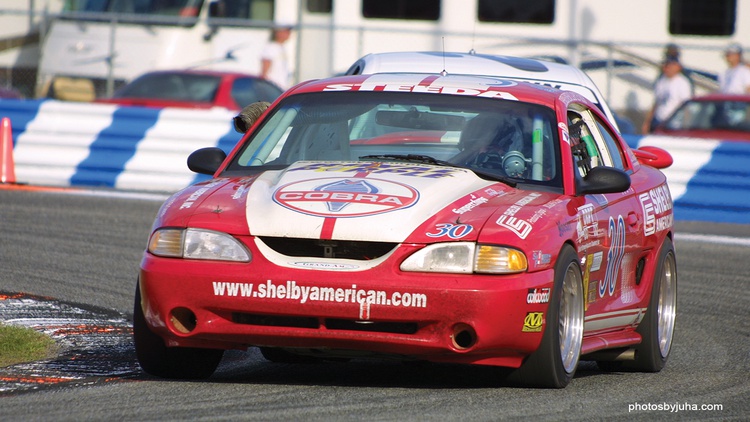
Throughout the ’80s and well into the ’90s, enthusiasts accepted a certain fate: The Mustang would always be limited to 5.0 liters. “Hey,” we reasoned, “we should be happy pony cars survived those various gas crises, economic downturns and other road blocks.”
Then Ford unveiled the race-ready 1995 Cobra R. The big news could be found under the hood: 351 cubic inches of Cleveland goodness. For you metric types, that’s 5.8 liters.
Other Cobra R upgrades included a genuine Fuel Safe fuel cell, five-speed Tremec transmission and Koni dampers. A fiberglass hood sporting the tallest profile this side of a 1964 Ford Thunderbolt made the Cobra R tough to miss. In addition to the $35,000- plus retail price, one more thing was needed for purchase: a racing license as well as proof that you were going to actually use the car in sanctioned competition.
Legacy: Ford only built 250 copies, and they quickly became a dominant force in the day’s professional street stock endurance series, the spiritual predecessors to today’s Continental Tire Challenge. Even Jason Priestly of “Beverly Hills, 90210” campaigned one.
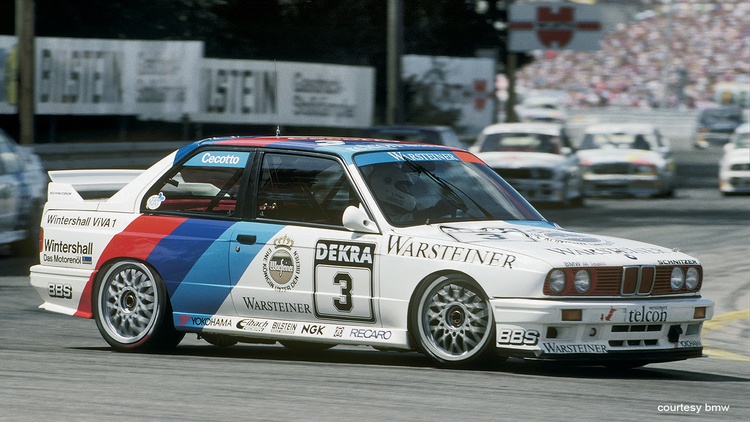
The original M3 may be more of a homologation special than an outright factory-built race car, but it definitely included all of the desired go-fast parts–and plenty of people successfully took it racing.
The E30-chassis M3 grew out of BMW’s desire to infiltrate FIA’s Group A. To be competitive, the standard 3 Series was going to need some help–like more power and a reworked suspension.
The “more power” part of the equation came from the brand’s S14 engine, a detuned, non-turbo version of its old F1 engine. The theory was that the four-cylinder’s crankshaft would be better suited to high engine speeds than the longer unit found in the six-cylinder cars. A widened track improved handling, while big brakes came from the 5 Series sedan.
Then there was the can’t-miss bodywork: Massive box flares covered that bigger track, a deep front spoiler, a rear wing and that unique deck lid. To help aero efficiency, engineers gave the rear window a more gradual lean, necessitating more custom bodywork. In short, this build involved more than just stiffer shocks and some wider wheels.
BMW needed to build 5000 copies to satisfy those FIA requirements. The model debuted in Europe in time for the 1986 model year, with Americanspec road cars arriving two years later. By the time the M3 left the showrooms after the 1991 model year, BMW had delivered more than 12,000 copies.
Legacy: BMW built the M3 with European touring car racing in mind, and it dominated right out of the box, winning both the World Touring Car Championship and European Touring Car Championship titles for 1987. The WTCC wound up being a one-year affair, and BMW’s dominance the following year helped end the ETCC after 1988. Thanks to the famed Evolution upgrades–more displacement, more power and more aero–the M3 continued to rule Group A touring car racing on a national scene for years to come. Here in the States, the M3 was a natural for the day’s IMSA Firehawk endurance championship. Korman Autoworks campaigned cars for the factory starting in 1987, scoring a one-two finish at the 500-mile race at Watkins Glen. The M3 worked well in autocross, too. Russell Wiles drove one to the C Stock title in 1990. When the SCCA bumped the car to A Stock the following year, he responded with a follow-up championship.
The M3 transitioned from professional race winner to club and track event staple. Prices dipped as the years piled on. Recently, though, the collector world has taken a shine to the original M3. A mint example sold for nearly $100,000 during last year’s Monterey auction festivities, while a 6000-mile example was recently advertised for $199,990. Wishful thinking or a sign of prices to come?

Talk about an unlikely race car built on an unlikely chassis. Remember the Oldsmobile Achieva? Don’t worry, few people do. It was Oldsmobile’s take on GM’s equally forgettable N-body platform, yet a successful competition-ready version was built in limited numbers.
That version was based on the Achieva SCX, and its W41 performance package boasted a high-output Quad 4 engine, stiffer suspension components and tighter gearing. Oldsmobile specifically downsized the wheels to 14-inches for better race tire availability–yes, that’s how things were at the time.
For racers, the optional C41 competition package increased the redline, deleted the a/c, fit a baffled fuel tank, and added a Torsen differential. Only a dozen or so cars were built with the C41 package, and GRM campaigned one back in the day in SCCA Solo competition.
Legacy: The car’s real forte was professional road racing, where Achieva driver Chuck Hemmingson went five for five to claim the 1992 IMSA Automobile Magazine International Challenge title. Dave Jolly’s team scored four wins in SCCA World Challenge competition that same year. Today, the SCX W41 is among the bargain buys on this list.
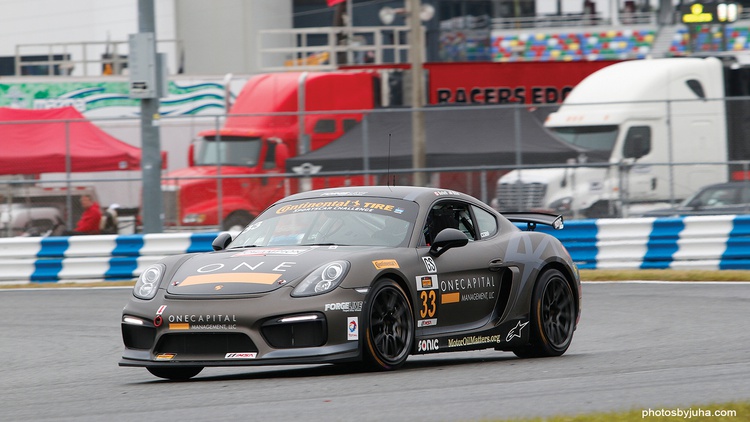
Porsche has supplied race-ready versions of its street products for decades, whether we’re talking the latest 911 or previous favorites like the 914, 924 and 944. The Boxster and Cayman have curiously remained absent from that list, though–until now.
Porsche recently gave us the track-only Cayman GT4 Clubsport. Original equipment includes an FIA-certified roll cage, six-point harness and fire-suppression system. The Clubsport fits into the Pirelli World Challenge series as well as IMSA’s Continental Tire SportsCar Challenge.
Legacy: At this year’s IMSA season opener at Daytona, the CJ Wilson Racing Clubsport qualified on the front row before finishing third in class.
Man, none of the rally homologation specials at all? Think of what the current STI would be if it wasn't for all the mad Impreza turbos of the 90's. Quattro Sport, 323 GTX, Evo. Heck, there are even some interesting stock-car related factory "race cars".
pinchvalve said:Great article, I can't think of a single car to add to that list.
I can ;)
Mercedes-Benz (W201) 190E 2.3-16
a.k.a., the reason why the E30 M3 exists!
LanEvo said:pinchvalve said:Great article, I can't think of a single car to add to that list.
I can ;)
Mercedes-Benz (W201) 190E 2.3-16
a.k.a., the reason why the E30 M3 exists!
Fair point, but I think it's reasonable to say the M3 has had a more lasting effect.
But the M3 would not have happened without the 190E with that groovy head on it.
I have always had a soft spot for a few factory racers not on the list.
Superbird/Daytona- They were just nuts, made solely so they could take them to the track. Mandate was to beat Ford, and they did. Were neutered/banned in short order.
917- Again, made solely so they could take them to the track. Insanely fast, compared to the competition.
GT-40- Again, made solely so they could take them to the track to lay a beating on Commendatore Enzo.
550 Porsche-The original giant slayer, not Giant slayer, though Mr Dean did die in his.
After years of checking, the 3rd Gen Camaro community has determined that the special "swinging" fuel pump pickup didn't actually exist on the 1LE IROC-Zs or any other 3rd Gen. The fuel tank baffle (which became standard for 1991 on all F-Bodies and simply put the fuel pump in a plastic cup with 1/4 of it open) wouldn't allow the pickup to swing anyway. Even with the baffled tank, I get fuel starve under 3/8s of a tank at autocross and on track. Of course, that's with today's tires. Something I'd like to see someone try is a non-baffled tank with the huge square or plus-shaped socks Holley now advertises in GRM.
As an avid follower of Showroom Stock from 1982 on, I watched as Camaro after Camaro won race after race, with Mustangs quite a bit behind. The 1LE was more of an answer to the 944 than to the Mustang.
I can add one- the Alfa Romeo GTA. The car won so very many races all over the world, and did win the first Trans Am race overall.
Displaying 1-10 of 19 commentsView all comments on the GRM forums
You'll need to log in to post.